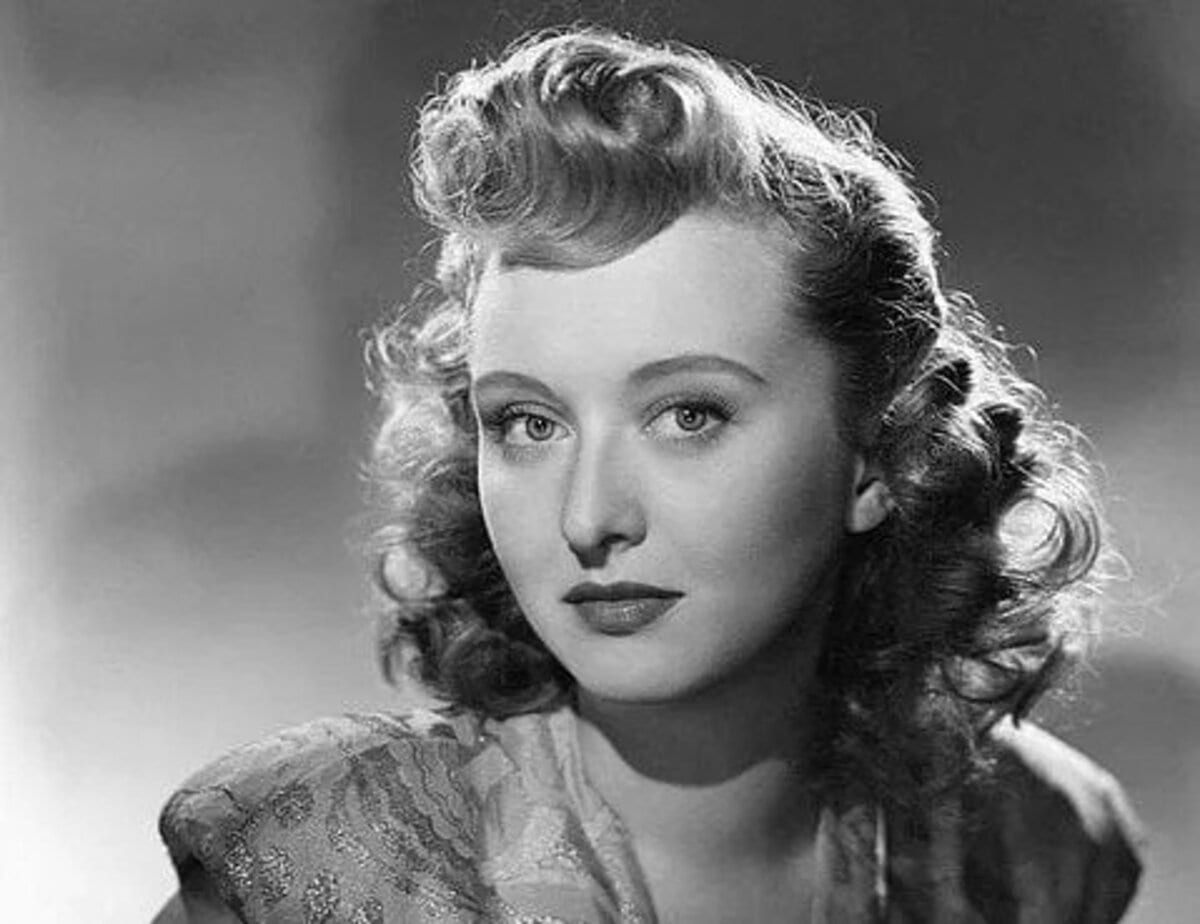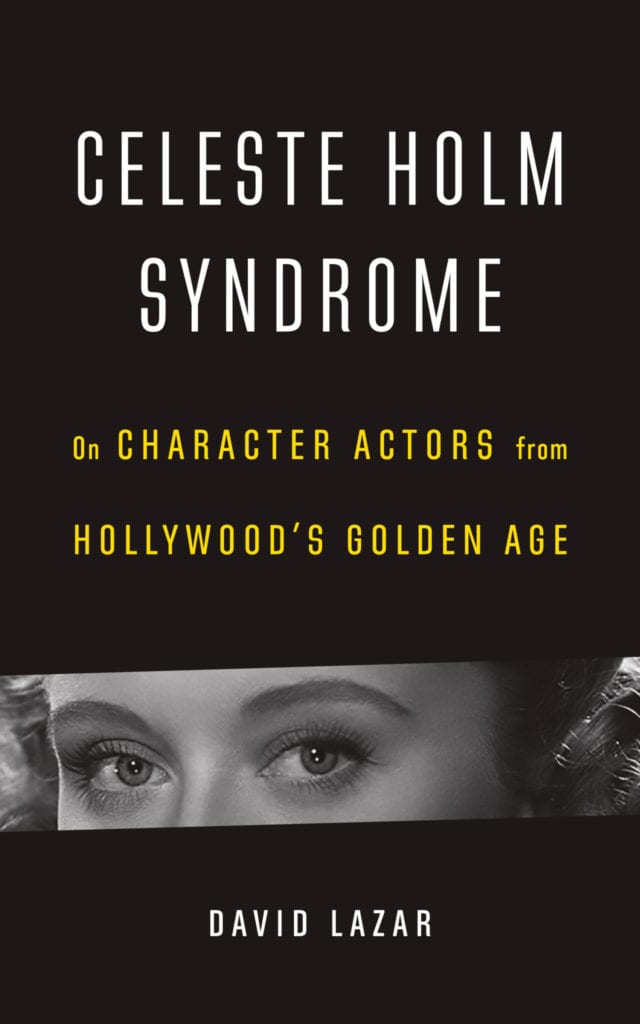
By Holly Mitchell
Virtual Launch Events:
The Book Cellar, Thursday October 1, 7pm CDT, with Michele Morano. Register here.
Green Apple Books, Tuesday, October 27, 7pm PDT, with Joanna Eleftheriou. Register here.
In Celeste Holm Syndrome, David Lazar remembers watching movies with his family and gaining a sense of belonging from reciting the names of actors, especially the lesser-known performers. To this day, character actors capture his attention, and, in these essays, he delves into how those from Hollywood’s Golden Age could steal the scene. He writes on ensembles, melancholy and comedy, sexist tropes and matriarchs, and voices and accents, considering the unique strengths of actors such as Preston Sturges, Elizabeth Wilson, Arnold Burns, and Celeste Holm. We asked him a few questions about his new book.

(University of Nebraska Press, October 2020)
How did you first become enamored with character actors?
My first fascination began very young, in the memory meta-film of standing behind my parents’ bed as they watched black & white films on TV, and murmured the names of actors they liked, usually the character actors who were like distant members of some branch of the family I hadn’t been introduced to.
You write that some actors have a type “etched into what they carry with them” while others “blend chameleon-like into a variety of roles.” Are there qualities that you would consider essential to a character actor?
Whether they fit the archetype of uniqueness or malleability, cinematic character actors still tend to have memorable faces, voices . . . some aspect of demeanor or physiognomy that makes an impression on film. Think of Thelma Ritter’s voice and accent or the wry glimmer in James Gleason’s eyes (his voice, too, homespun, ingenuous), both of which had countless variations, but were also individual marks.
Later on, you compare the names of character actors to “musty passwords of a secret society.” How has being a cinephile shaped your life as a writer?
Completely. From my earliest years as a writer, film found its way into my work, poems, then essays and prose poems, as a world I lived in almost as much as that other world, where we cook and love and raise children. Probably because I sought refuge in films so young, and have been so consistently enthralled with the work of so many directors, with the possibilities of so many genres, the styles of so much performance, I frequently live in films in my mind.
When did you start writing these essays?
The first of these essays was a version of the Edward Everett Horton and Jessie Royce Landis Essay which I wrote for Body of Brooklyn, my book of essays of many years ago. But I didn’t think of a series of essays until years later. A Guggenheim Fellowship five years ago helped me push the project forward—but, as one might imagine, they take a long time, since I re-watch dozens of films for each essay.
From my earliest years as a writer, film found its way into my work, poems, then essays and prose poems, as a world I lived in almost as much as that other world, where we cook and love and raise children.
How did you choose the photos that appear in the book?
Some of the photographs refer to specific moments in scenes, as with Elizabeth Wilson in The Graduate or Alan Bridge in The Miracle of Morgan’s Creek. For the rest, it was a combination of my choosing photos that seemed characteristic and my editors at Nebraska choosing what was available.
In several chapters, you discuss voice, including New York accents. What draws you to this aspect of performance?
Having grown up in a crowded Brooklyn rowhouse in which performance, specifically the performance of difference accents, vocal nuances, comic gestures, was an essential survival tool, I’m naturally drawn to every aspect of voice in performance, especially the comical. The performance of great comic timing in vocal inflection thrills me.
(David Lazar reads from Celeste Holm Syndrome, from the essay on Martin Balsam, which will soon be published in Fourth Genre.)
Was there any actor you wanted to write about, or perhaps did, who didn’t make it into the final manuscript?
No one was cut from this film, but there were many parts I might have written: the aforementioned James Gleason, the Hoffmans: Dustin and Phillip Seymour, who are the epitome of character actor as leading man, Frank Morgan, Jean Dixon, Leo G. Carroll . . . I have a long list, but perhaps because of this, I wanted to set the book loose before it turned into a project with a fetishistic leash.
What films would you most recommend for your readers?
There are so many ways to answer this question. Films that I am constantly astonished, enriched and delighted by include: Sunrise, The Miracle of Morgan’s Creek, To Be or Not To Be, Stalker, Swing Time, The Umbrellas of Cherbourg, Sans Soleil, Children of Paradise, Shadow of a Doubt, Tokyo Story, My Neighbor Totoro, In a Lonely Place, Dr. Strangelove, Let the Right One In . . . there are so many.
What are you reading and watching right now?
The books I’ve read most recently are Sukhdev Sandhu’s Night Haunts: A Journey Through the London Night, a re-read of Thomas Nashe’s An Unfortunate Traveller, Annie Ernaux’s The Years and the many manuscripts I’m reading for 21st Century Essays at Ohio State University Press; Watching: during the heart of the worst of the coronavirus, I dived deep into Scandinavian Noir series: The Bridge, Trapped, The Valhalla Murders . . . . though I’ve also indulged in Toast of London, one of the funniest, silliest series ever. In terms of films, I’ve loved filling in Maren Ade’s and Cheryl Dunye’s films; Luis Garcia Berlanga: every one of whose films is sharp, funny and in their way, perfect, especially The Executioner and Placido, and Jia Zhangke, Ash is Purest White, A Touch of Sin, Still Life . . . . I just watched Olivia, an extraordinarily important film for lesbian cinema, by Jacqueline Audry, and thought it was wonderful.

A peek from David Lazar’s next project: meditations, fictions, and elaborations of found texts and objects, photographed in place in various cities, over a period of ten years. (Photo: David Lazar).
Can you say what your next project will be?
I have a few things to juggle: one project I’ve been putting off and looking forward to for years is about the found texts I’ve been photographing in the streets of Chicago, New York, Athens, London . . . for years. Stray written and printed texts, post cards, notes, letters, cards, etc . . . I write texts to accompany these texts, after I photograph them where I found them.
I’m also working on the next collection of essays: I have a few written, and a list of essays I’m longing to write for it. Always essays waiting to be written. As Alexander Smith said, “The world is everywhere whispering essays.”
David Lazar is a professor at Columbia College Chicago. He is the author of several books and the founding editor of the literary magazine Hotel Amerika. Lazar was awarded a John Simon Guggenheim Fellowship for General Nonfiction in 2015. His books include After Montaigne, The Body of Brooklyn, Truth in Nonfiction, Occasional Desire, and I’ll Be Your Mirror.
